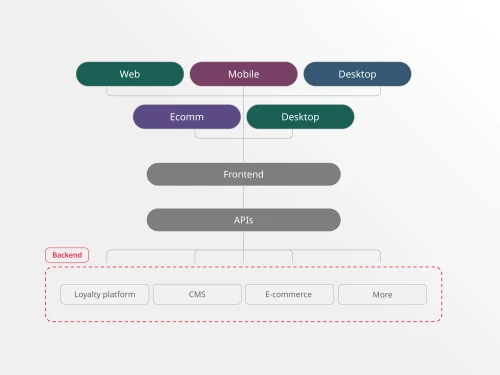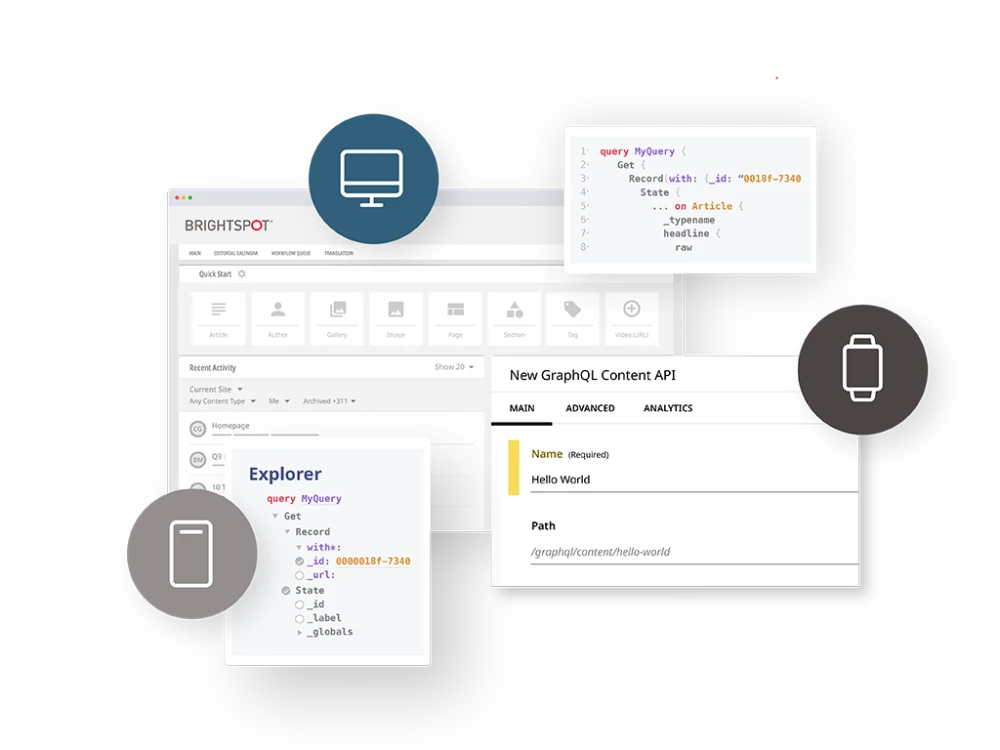Headless CMS
Find out everything you need to know about headless CMS architecture and the questions decision makers need to ask when considering headless CMS for their organizations. Brightspot’s extensible architecture means you can publish how you want — headless or decoupled — all from the same environment.
Featured headless CMS resources
Learn the difference between headless CMS, decoupled CMS and traditional CMS architecture, as well as the pros and cons for each.
Find out everything you need to know about headless CMS architecture and the questions to ask when considering headless CMS as the solution for your business.
More headless CMS resources
Banner Solutions sought a new e-commerce platform that could overcome limitations, support individual channels and deliver an engaging user experience. After evaluating options like Adobe Experience Manager and Drupal, Banner Solutions chose Brightspot for its flexibility and seamless integration capabilities.
To achieve its vision of being a leader in commercial real estate news, CoStar needed a platform that could support its fast-growing team of writers and editors alongside the need for sophisticated publishing workflows and the ability to integrate seamlessly with CoStar’s proprietary ecosystem of data sources.
Following its acquisition by Amazon, Whole Foods delivered on its brand promise with an engaging content-as-commerce approach built on a new API-powered headless CMS platform.
Leading Australian broadcaster SBS consolidated its content-management approach onto one enterprise CMS that could support flexible, multilanguage programming and drive greater publishing efficiency for its content teams.
The Los Angeles-based studio needed a content platform to support its redesigned front-end experience. With Brightspot’s headless CMS, the entertainment giant can rapidly publish content to its website and dedicated microsites for its portfolio of blockbuster movies and TV shows.
Unlock the power of headless CMS to streamline your content delivery and boost team productivity across all digital channels. Discover how separating content management from presentation lets your teams focus on what matters most — creating engaging content that reaches audiences wherever they are.
In a rapidly evolving digital landscape, a headless CMS offers the speed, flexibility and efficiency businesses need to accelerate their digital transformation. Brightspot goes beyond standard headless solutions, empowering both developers and content teams with unmatched modularity, intuitive authoring tools and seamless integrations — ensuring organizations are not just future-ready, but future-proof.
Unlock the full potential of headless CMS and how it revolutionizes content management. Learn the differences between headless CMS, traditional CMS and decoupled CMS, and discover how Brightspot’s hybrid-headless CMS approach can future-proof your business.
Take a technical deep dive on CMS architecture and the role that APIs play, including the distinction between API-only versus API-first system design.
Finding the right CMS means ensuring it can adapt to your organization’s unique needs. Brightspot’s extensible architecture allows you to create, extend, or modify content data models—whether by adding new content types, customizing existing ones, or adjusting fields—all while maintaining a seamless and scalable experience.
While Mattress Firm’s brick-and-mortar stores are recognizable to many Americans, the company has recognized the importance of bolstering its digital presence, as have many traditional retailers. To enhance its online footprint, Mattress Firm collaborated with Brightspot to revamp both MattressFirm.com and its blog, The Daily Doze.
GraphQL offers a structured, efficient alternative to REST, making API-based CMS more powerful and flexible. Learn how it enhances content delivery and management.
Discover the pros and cons of a headless CMS with GraphQL and learn how Brightspot has developed innovative solutions to tackle four primary issues associated with it.
With Brightspot, POLITICO has achieved its global ambition: deliver customized content, in real time, to every user on any device.
With Brightspot as its back end, Televisa today manages nine sites — eight of which are headless — from one CMS. Find out how it works.
Brightspot enables Univision to deliver up-to-the-minute news and entertainment across a diverse digital portfolio to millions of Hispanic Americans.




